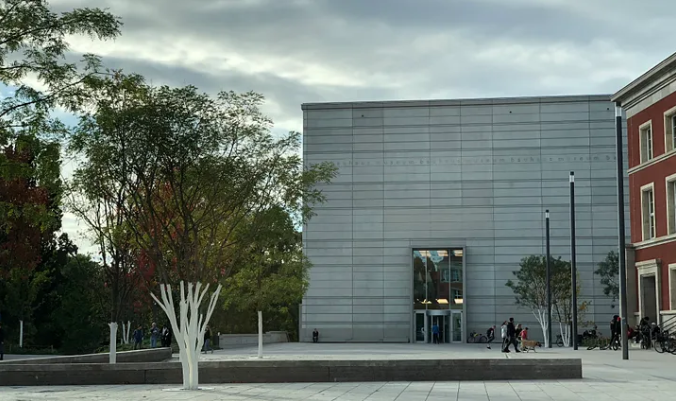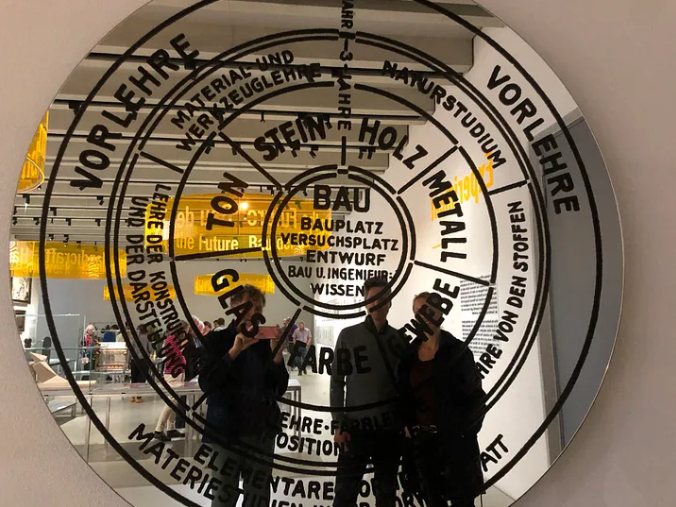Bauhaus 100 years: how relevant is it today?

The new Bauhaus Museum in Weimar
I recently visited the new Bauhaus Museum in Weimar, built to commemorate the 100th anniversary of the founding of the Bauhaus. It was a moment in which to reflect on the influence of this school and its relevance today.
Timing is everything: in 1919 the Bauhaus was born in Weimar under Walter Gropius, in the aftermath of the devastating madness of World War 1. With all the values of the 19th century washed away in blood, it could have been a new slate wiped clean. But immediately after the war there was an understandable period of nostalgia for stability. Maybe too the seismic developments in art before the war — Cubism, Futurism, etc — were seen as part of the madness. Picasso had previously helped turn the art world upside down, but now he temporarily reverted to a more conventional mode. Similarly in the design world, the new Bauhaus referred back to the Arts and Craft movement of the previous century, with a focus on craft skills.
Early batches of students were first introduced to the seven basic materials of making — stone, metal, wood, clay, textile, glass and colour. Only when they had learned to control a material were they allowed to think about designing with it. This was the way I also learnt: I first taught myself how to work with wood, and only when I felt confident enough did I venture out into developing my own ideas of design. I strongly believe that this is just as relevant today as it was then: you can’t design what you can’t make. All the pretty CAD drawings in the world are worthless if they can not be made without fatally compromising the idea.

Wheel diagram of the Bauhaus curriculum
But within a few years the Bauhaus started to shift away from this workshop based teaching to a more academic and technical bias. Johannes Itten, the intuitive artist and foundation tutor, was replaced by Lászlo Moholy-Nagy the constructivist. Gropius himself moved the school towards architecture and industrial design, a direction taken further by Mies van der Rohe when he later became director in Dessau and Berlin. Initial idealism for creating a good cheap house and contents for all sadly did not last and design inevitably gravitated towards the rich elite.
Thus Modernist design was born in which the house became “a machine for living”. Overemphasis on left brain thinking came to dominate 20th century design, spurred on by rapidly developing machine technology. The intuitive, haptic and sensitive elements of creativity were pushed into the lesser margins of ‘craft’. A hierarchy was born where ‘good design’ was promoted as an intellectual pursuit of more value than the humble working of material by hand. It was exactly the opposite to what the early Bauhaus had set out to achieve.
This was also driven by capitalism which demanded mass produced goods in constant need of replacement, rather than honest well made objects that we love and keep. Modernism willingly fell into consumerism’s open arms so that today designers compete to produce stuff they and manufacturers need to sell far more than we need to buy.
Now we are struggling to cope with the mess, especially all the everlasting plastic. There has to be a return to natural, sometimes perishable materials that are fully sustainable — that are part of a circular economy, not a linear-all-the-way-to-the-landfill one — and hence the craft skills to work them. Longevity is no longer as important as low impact, meaning zero carbon emissions and balanced resource use. So I believe that it is time to look again at the early values of the Bauhaus and relegate its later modernist iteration to history.

The new Bauhaus Museum in Weimar
I recently visited the new Bauhaus Museum in Weimar, built to commemorate the 100th anniversary of the founding of the Bauhaus. It was a moment in which to reflect on the influence of this school and its relevance today.
Timing is everything: in 1919 the Bauhaus was born in Weimar under Walter Gropius, in the aftermath of the devastating madness of World War 1. With all the values of the 19th century washed away in blood, it could have been a new slate wiped clean. But immediately after the war there was an understandable period of nostalgia for stability. Maybe too the seismic developments in art before the war — Cubism, Futurism, etc — were seen as part of the madness. Picasso had previously helped turn the art world upside down, but now he temporarily reverted to a more conventional mode. Similarly in the design world, the new Bauhaus referred back to the Arts and Craft movement of the previous century, with a focus on craft skills.
Early batches of students were first introduced to the seven basic materials of making — stone, metal, wood, clay, textile, glass and colour. Only when they had learned to control a material were they allowed to think about designing with it. This was the way I also learnt: I first taught myself how to work with wood, and only when I felt confident enough did I venture out into developing my own ideas of design. I strongly believe that this is just as relevant today as it was then: you can’t design what you can’t make. All the pretty CAD drawings in the world are worthless if they can not be made without fatally compromising the idea.

Wheel diagram of the Bauhaus curriculum
But within a few years the Bauhaus started to shift away from this workshop based teaching to a more academic and technical bias. Johannes Itten, the intuitive artist and foundation tutor, was replaced by Lászlo Moholy-Nagy the constructivist. Gropius himself moved the school towards architecture and industrial design, a direction taken further by Mies van der Rohe when he later became director in Dessau and Berlin. Initial idealism for creating a good cheap house and contents for all sadly did not last and design inevitably gravitated towards the rich elite.
Thus Modernist design was born in which the house became “a machine for living”. Overemphasis on left brain thinking came to dominate 20th century design, spurred on by rapidly developing machine technology. The intuitive, haptic and sensitive elements of creativity were pushed into the lesser margins of ‘craft’. A hierarchy was born where ‘good design’ was promoted as an intellectual pursuit of more value than the humble working of material by hand. It was exactly the opposite to what the early Bauhaus had set out to achieve.
This was also driven by capitalism which demanded mass produced goods in constant need of replacement, rather than honest well made objects that we love and keep. Modernism willingly fell into consumerism’s open arms so that today designers compete to produce stuff they and manufacturers need to sell far more than we need to buy.
Now we are struggling to cope with the mess, especially all the everlasting plastic. There has to be a return to natural, sometimes perishable materials that are fully sustainable — that are part of a circular economy, not a linear-all-the-way-to-the-landfill one — and hence the craft skills to work them. Longevity is no longer as important as low impact, meaning zero carbon emissions and balanced resource use. So I believe that it is time to look again at the early values of the Bauhaus and relegate its later modernist iteration to history.
